(单词翻译:单击)
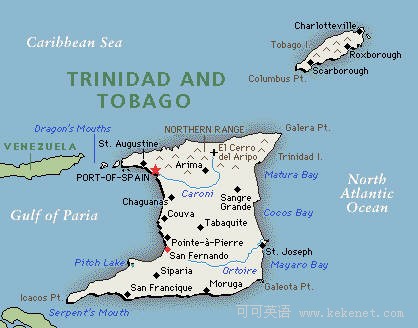
The home of carnival, steel bands, calypso and limbo dancing, Trinidad and Tobago's blend of different cultures gives them an air of cosmopolitan excitement. Liming, or talking for talking's sake, is a popular pastime, as is chatting about, watching and playing cricket.
Trinidad and Tobago is one of the wealthiest countries in the Caribbean, thanks to its considerable reserves of oil and gas. Along the north of Trinidad runs the Northern Range of mountains, looming over the country's capital, Port of Spain. On the north and east coasts lie beautiful beaches.

Port of Spain, surrounded by lush green hills, is the capital and business hub of oil-rich Trinidad. Bazaars throng beneath modern skyscrapers and mosques rub shoulders with cathedrals. San Fernando is the island's second town and the main commercial centre in the south. Close by is the fascinating natural phenomenon of the Pitch Lake, a 90-acre (36.4 hectares) lake of asphalt which constantly replenishes itself.
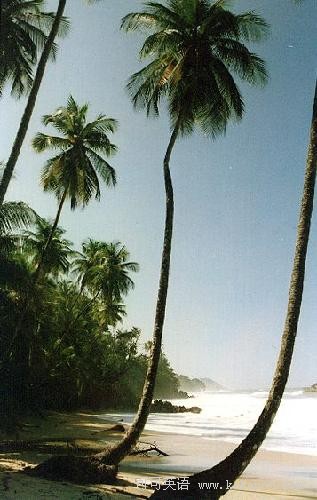
Tobago is very different from her sister isle, some 32km (20 miles) away. The island is so beautiful and fertile that just about every western European colonial power has fought to have it. It is a tranquil island with calm waters and a number of fine beaches, each with their own flavour. They include Pigeon Point on the southwest coast. Buccoo Reef, an extensive coral reef, lies offshore.
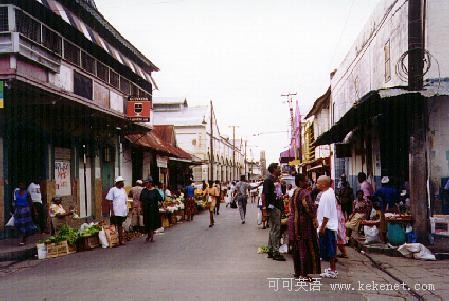
The history of Trinidad & Tobago has been one of invasion and conquest since its discovery by Christopher Columbus, who claimed it for Spain in 1498. In 1888, Tobago was amalgamated with Trinidad and administered as a single colony thereafter. The British sponsored the West Indies Federation as a potential post-colonial model, in the belief that most of the Caribbean islands would be unable to survive politically or economically on their own. The Caribbean peoples thought otherwise and the Federation collapsed in the early-1960s. By this time, Trinidad and Tobago had already been granted internal self-government and achieved full independence in 1962.

The only shadow on the paradisiacal image of the islands is the negative impact of drugs. As with other nations in the region, Trinidad and Tobago - a major transshipment point for cocaine - has become ridden with drugs, gang-related violence and corruption, which is threatening the increasingly important tourism industry.
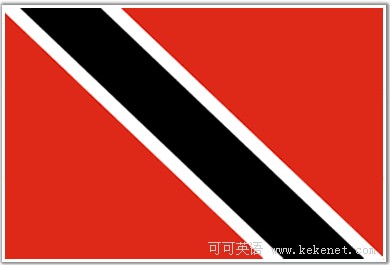
独立日:8月31日(1962年) 国庆日:8月31日(1962年)
国旗:呈长方形,长与宽之比为5∶3。旗地为红色,一道从左上角斜贯至右下角的黑色宽带将红色旗面分成两个相等的直角三角形,黑色宽带两侧有两道细白边。红色代表国家和人民的生命力,还象征温暖和太阳的热能;黑色象征人民的力量和献身精神,也象征国家的统一和财富;白色象征国家的未来和海洋。两个三角形代表特立尼达岛和多巴哥岛。

国徽:中心图案为盾徽。盾面上部为黑地上两只蜂鸟,为该国国鸟,象征人民不畏强权、酷爱独立和自由的精神;下部为红地上三只帆船,代表1498年哥伦布抵达该岛国时的船队。盾徽上端为一顶头盔;头盔之上有一个舵轮和一棵棕榈树,象征该岛国海运业的重要性。盾徽左侧是一只朱鹭,鸟爪下为有三座山峰的山峦,象征特立尼达岛;右侧是一只火烈鸟,象征多巴哥岛。下端的绶带上用英文写着“我们共同追求, 我们共同获胜”。

自然地理:5128平方公里。位于小安的列斯群岛东南端,在委内瑞拉岸外。由小安的列斯群岛中的特立尼达和多巴哥两个加勒比岛组成。特立尼达岛面积4827平方公里,多巴哥岛301平方公里。
人口:127万(1995年统计)。黑人占36.9%,印度人占40.3%,其余为其他种族人。官方语言为英语。居民中34%信奉天主教,25%信奉基督教新教,25%信奉印度教,6%信奉伊斯兰教。

首都:西班牙港(Port of Spain)
简史:特立尼达岛原为印第安人阿拉瓦克族和加勒比族的居住地。1498年哥伦布经过该岛附近,宣布该岛为西班牙所有。1781年被法国占领。1802年据《亚眠条约》划归英国。多巴哥岛历经西、荷、法、英多次争夺,1812年据《巴黎条约》沦为英国殖民地。1889年两岛成为一个统一的英国殖民地。1956年实行内部自治。1958年参加西印度联邦。1962年8月31日宣布独立,成为英联邦成员国,英国女王为国家元首。1976年8月1日新宪法生效,废除君主立宪制,改制为共和国,仍是英联邦成员国。

政治:总统是国家元首,由参、众两院议员组成的选举团选举产生,任期5年。全国至少每五年举行一次大选,政府由大选中获众议院数席位的政党组成,对议会负责。议会是国家立法机构,由参、众两院组成,任期均为5年。参议院31席,由总统任命,其中总理提名16人,反对党领袖提名6人,另9人由总统在社会名流中选任。众议院36席,由普选产生。
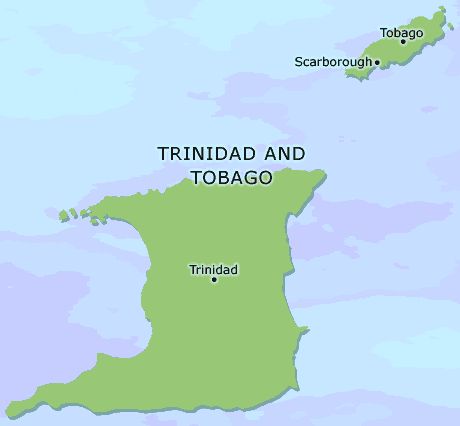
外交:奉行独立自主和不结盟的外交政策,维护民族独立和国家主权,坚持不干涉别国内政原则,反对殖民主义和种族主义,主张建立国际经济新秩序,发展平等互利的国际经济合作,积极推进加勒比一体化进程。在与西方保持密切关系的同时,强调加强与发展中国家的联系,特别是加强同加勒比及拉美国家的合作。重视与亚洲国家发展经贸关系。
与中国关系:1974年6月20日,特立尼达和多巴哥与中国建交。


